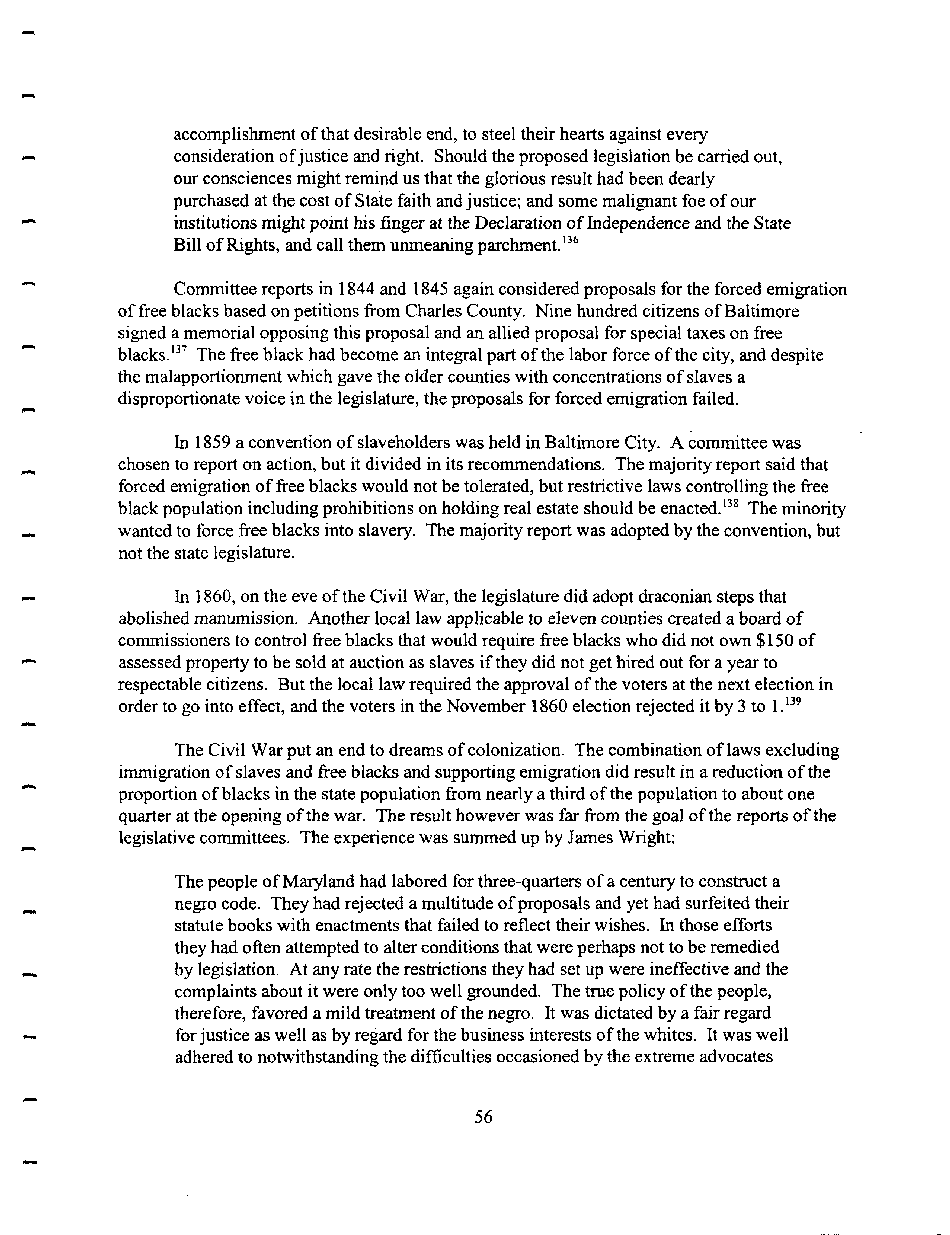|
accomplishment of that desirable end, to steel their hearts against every
consideration of justice and right. Should the proposed legislation be carried out,
our consciences might remind us that the glorious result had been dearly
purchased at the cost of State faith and justice; and some malignant foe of our
institutions might point his finger at the Declaration of Independence and the State
Bill of Rights, and call them unmeaning parchment.136
Committee reports in 1844 and 1845 again considered proposals for the forced emigration
of free blacks based on petitions from Charles County. Nine hundred citizens of Baltimore
signed a memorial opposing this proposal and an allied proposal for special taxes on free
blacks.137 The free black had become an integral part of the labor force of the city, and despite
the malapportionment which gave the older counties with concentrations of slaves a
disproportionate voice in the legislature, the proposals for forced emigration failed.
In 1859 a convention of slaveholders was held in Baltimore City. A committee was
chosen to report on action, but it divided in its recommendations. The majority report said that
forced emigration of free blacks would not be tolerated, but restrictive laws controlling the free
black population including prohibitions on holding real estate should be enacted.138 The minority
wanted to force free blacks into slavery. The majority report was adopted by the convention, but
not the state legislature.
hi 1860, on the eve of the Civil War, the legislature did adopt draconian steps that
abolished manumission. Another local law applicable to eleven counties created a board of
commissioners to control free blacks that would require free blacks who did not own $150 of
assessed property to be sold at auction as slaves if they did not get hired out for a year to
respectable citizens. But the local law required the approval of the voters at the next election in
order to go into effect, and the voters in the November 1860 election rejected it by 3 to I.139
The Civil War put an end to dreams of colonization. The combination of laws excluding
immigration of slaves and free blacks and supporting emigration did result in a reduction of the
proportion of blacks in the state population from nearly a third of the population to about one
quarter at the opening of the war. The result however was far from the goal of the reports of the
legislative committees. The experience was summed up by James Wright:
The people of Maryland had labored for three-quarters of a century to construct a
negro code. They had rejected a multitude of proposals and yet had surfeited their
statute books with enactments that failed to reflect their wishes. In those efforts
they had often attempted to alter conditions that were perhaps not to be remedied
by legislation. At any rate the restrictions they had set up were ineffective and the
complaints about it were only too well grounded. The true policy of the people,
therefore, favored a mild treatment of the negro. It was dictated by a fair regard
for justice as well as by regard for the business interests of the whites. It was well
adhered to notwithstanding the difficulties occasioned by the extreme advocates
56
�
|

